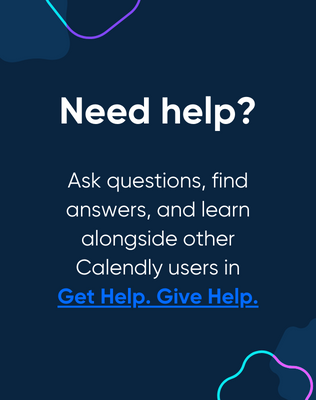Hey there, Brenton! Thanks for posting! =)
Firstly, check out our New User Guide - it’ll def prove helpful as you get used to the platform!
Firstly, you’ll want to make sure you have correctly set up your Availability Schedules to reflect when you are busy/free in Calendly. Then, you’ll want to head to your Calendar Connection page > check for conflicts > make sure you have properly set up which calendars to be read for conflicts. Here’s the bread and butter - any events on your O365 Calendar *must be marked busy* in order to be read as conflicts by Calendly so that you are not booked over them. “Free” status events can be booked over, always.
Now, if Calendly appointments are being made and not pushing to your O365 calendar, it’s possible you haven’t quite set it up correctly. Try disconnecting your calendar completely and reconnecting it.
Navigate to your Calendar Connection page from the drop-down menu on the top right corner of your page.
Select which type of calendar you will be connecting. Calendly integrates with the following platforms:
Google
Office 365 or Outlook.com
Outlook desktop for Windows PC
Exchange
Once connected, take a look at the settings on your Calendar Connection page.
If you have connected more than one calendar, use Edit to choose which you would like Calendly to check for conflicts. Any events labeled busy in the selected calendars will be read as conflicts, and those times will be removed from your scheduling page.
You can also select which calendar you would like your Calendly events added to. When an invitee chooses an available time to meet with you, the details will be published to your connected calendar and the Scheduled Events tab on your Home page automatically.
Note:
You can only publish events to one connected calendar.
If you run into further issues, let us know!

